Got a query about plasma cutting? Want to find out more about what a plasma cutter is?
We’ve taken a look at some of the most popular questions about plasma cutting. Including what a plasma cutter is used for, what a plasma cutter does, and what you can do with a plasma cutter. Find out more below!
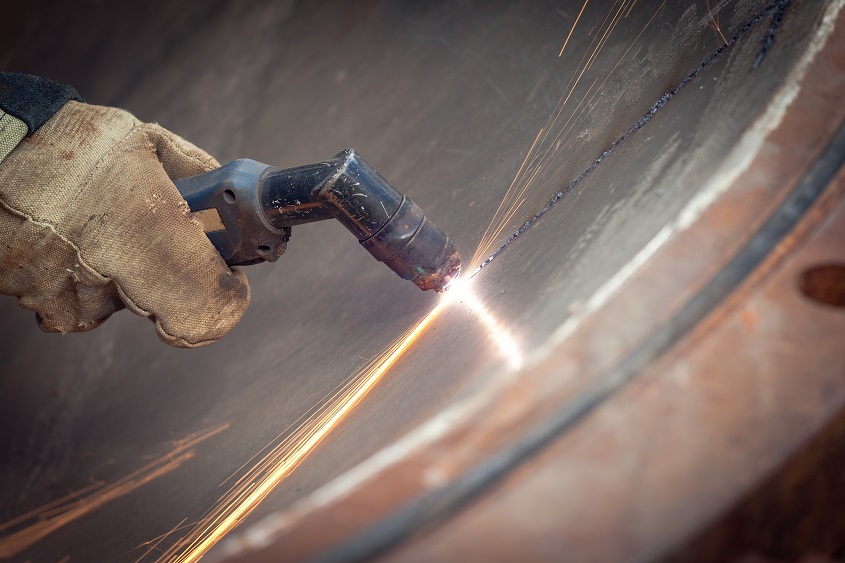
What is a Plasma Cutter?
If you need to cut metal, whether it be sheet steel or fabrication components, a plasma cutter will help to make the process an easy one.
Available as hand held and mechanised machines, a plasma cutter uses an electrical current to create an arc. This slices through the workpiece accurately and efficiently, making it a preferred option for industrial cutting applications.
For more information on the history and revolution of the plasma cutting process, click here.
What is a Plasma Cutter Used For?
A plasma cutter can be used for cutting all kinds of metal components. From shop cutting of sheet steel and aluminium, to on-site de-commissioning of tanks and rail tracks. A plasma cutter is suitable for cutting mild and stainless steel, aluminium, copper and brass, essentially conductive metals. Thicknesses range from as thin as 1-2mm, up to around 150mm in certain instances!
What Can You Do With a Plasma Cutter?
Cutting metal with a plasma cutter is the main aim. They are used largely in fabrication shops as well as in automotive repair, industrial structural steel and construction companies use plasma cutters in large-scale projects to cut and fabricate huge beams or metal-sheet goods. Locksmiths use plasma cutters to bore into safes and vaults when customers have been locked out and scrap and salvage dealers use plasma for scrapping operations. Many craftsmen, artists and metal workers use handheld cutters to create unique works of art that would never be possible with conventional metal-working tools. This single tool gives plasma cutter operators the ability to bevel cuts, bore precise holes and cut in just about any way they can conceive using.
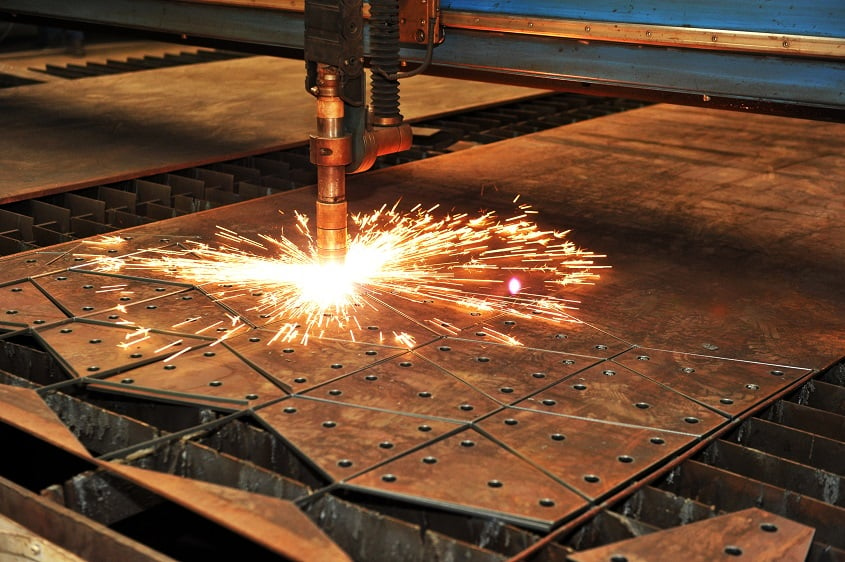
How Does a Plasma Cutter Work?
Plasma cutters work by sending an electric arc through a gas that is passing through a constricted opening. The gas passes through a restricted opening (nozzle) causing it to squeeze by at a high speed. It is this high speed gas that cuts through the metal.
Does a Plasma Cutter Need Compressed Air?
Compressed air is the most commonly used gas for lower current plasma cutters. So great if you are cutting thinner materials from gauge to 2.5cm thick. Compressed air is often called shop air and some plasma cutters have a built in compressor.
How Much Air Does a Plasma Cutter Need?
It depends on what material, what thickness you are cutting and what plasma cutter you have. However all plasma manufacturers include minimum air flow and pressure requirements in the owner’s manual. These requirements differ between systems, but as an example, a Hypertherm Powermax 45 requires 6 cubic feet per minute (cfm) at 90 psi.. Plasma cutters are air hungry devices unless all cuts made are very short so make sure you purchase a compressor that can keep up your plasma cutter.
Does a Plasma Cutter Use Gas?
Yes a plasma cutter uses either one gas or a mixture of gases. The gas can be shop air, nitrogen, argon, oxygen or a mixture. An electric arc is sent through the gas that is passing through a constricted opening.
What Gas is Needed for a Plasma Cutter?
Many fabricators choose plasma systems with “dual-gas” or “multi-gas” capability. This means that a variety of plasma and shield gases can be used for various applications. Multi-gas torches offer the most flexibility for shops that cut a variety of materials. Different gases are used, depending on material type and thickness, in order to achieve the best balance of cut quality, parts life, productivity, and overall cost of operation. Most plasma system manuals tend to overwhelm the operator with a confusing array of cut charts and gas choices.
What Can a Plasma Cutter Cut Through?
A plasma cutter can cut through electrically conductive materials.
The three most common materials are mild steel, stainless steel and aluminum but it can cut through copper, brass and any other conductive metal.

Can I Cut Cast Iron with a Plasma Cutter?
Plasma works well on most anything that conducts electricity and can certainly cut through cast iron along with steel, copper and other conductive metal.
Can I Cut Aluminium with a Plasma Cutter?
It cuts aluminum great. It’s just that raw plasma-cut edges aren’t ideal for welding because of the oxides. You would also have to choose your gas carefully.
Can You Use a Plasma Cutter on Aluminium?
If you want to cut aluminium with a plasma cutter make sure you use nitrogen or a mix with oxygen as this will improve the cut quality and extended the life of your parts. With the proper selection of gases, you can get a very nice edge on aluminum with plasma. The main issue is oxidization but advances in technology mean that a plasma cutter will definitely cut aluminium but it is worth seeking advice to fine tune the process.
Can You Weld with a Plasma Cutter?
There are some multi-function plasma cutters that you can also MMA and TIG weld with. Often called a 3in1. They are not favoured by the professional workshop and should only be consider if using very occasionally. It is much better to buy separate systems.
How Thick Can You Cut with a Plasma Cutter?
Once you start to get into the nitty gritty of a plasma cutter’s features, maximum cut thickness is going to be the first specification that you’ll want to check. It refers to the ideal upper limit on metal thickness that you can cut comfortably while still achieving smooth lines. The maximum thickness a plasma cutter can cut is 150mm. You would probably use a cnc plasma cutting table with mechanised torches to cut 6in thick heavy steel plate.
How Hot is a Plasma Cutter?
The temperature of the plasma is in excess of 20 000°C and the velocity can approach the speed of sound. When used for cutting, the plasma gas flow is increased so that the deeply penetrating plasma jet cuts through the material and molten material is removed in the efflux plasma.
How Hot is a Plasma Cutting Flame?
Hot enough to make your fingers vanish. The intense heat of a plasma cutter can reach 20,000 degrees Celsius that is a massive 45, 000 Fahrenheit. With the velocity which can approach the speed of sound this is potentially a dangerous machine.
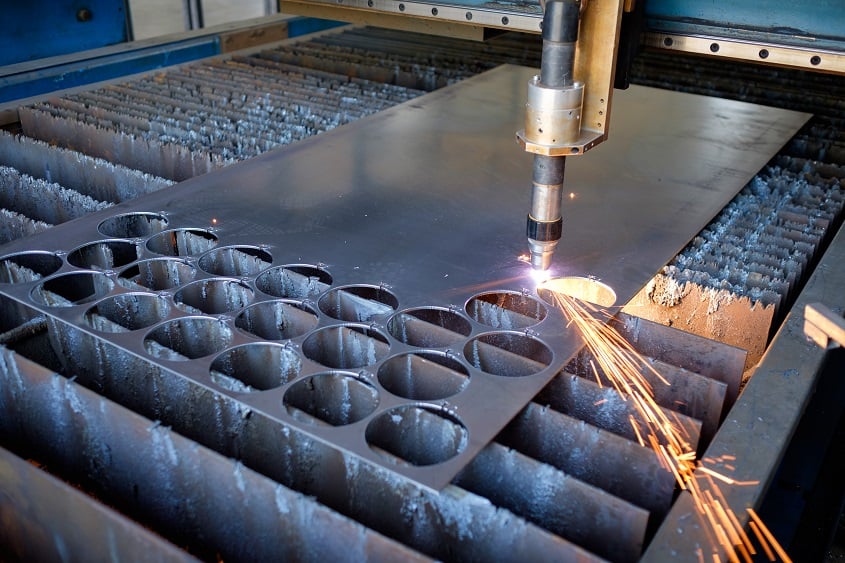
How Long Do Plasma Cutter Tips Last?
It’s hard to be specific about exactly when you’ll need to replace your nozzle and electrode, as this will depend on many factors, including the speed you cut, the thickness of the workpiece and the amount of amperage you use. However, it is a good idea to replace your nozzle and electrode at the same time (according to whichever wears out first), as this will put you back to optimum cutting performance, rather than using a new electrode with a worn and inconsistent nozzle.
Can You Get Flash Burn from a Plasma Cutter?
A plasma cutting arc, like any electric arc, gives off a broad spectrum of electromagnetic radiation, which extends all the way from Infrared light (IR), through the visible spectrum, and into the Ultra Violet (UV) range. Plasma cutting arcs can also be very intense, because the arc current is typically anywhere from 100 to 800 Amperes. Needless to say, looking at an arc that intense can easily cause eye damage, including permanent damage leading to blindness.
How Does a CNC Plasma Cutter Work?
A CNC plasma cutting system is a machine that carries a plasma torch, and can move that torch in a path directed by a computer. The term CNC refers to Computer Numerical Control which means that a computer is used to direct the machines motion based on numerical codes in a program. A CNC plasma cutter is necessary to achieve accurate and edge quality cuts for most metal fabrication projects.
A mechanised plasma torch is normally straight and carried by the profile cutting table compared to that of a hand held torch. CNC plasma cutting involves cutting through electrically conductive materials by utilizing an accelerated jet of hot plasma that is directed right at the material being cut; steel, aluminum, brass, and copper.
CNC plasma cutters vary widely in size, price, and functionality. The machines are highly accurate and fast cutting through, slicing metals at speeds of up to 500 inches per minute. Plasma cutters require a plasma gas and an assist gas to function, and they vary according to the material being cut.
Unlike many hobby CNC systems, a plasma cutter needs a large amount of space in a well-ventilated area in order to operate it safely.
Westermans have nearly 60 years’ experience providing quality new and used plasma cutters for sale in the UK and internationally. We offer new, used and refurbished Plasma cutting systems, plasma profile cutters and CNC plate cutters in stock. For more information, or to answer any questions you might have, get in touch with our team today.


 600+ machines in stock
600+ machines in stock Worldwide delivery
Worldwide delivery Rated Excellent
Rated Excellent Warranty included
Warranty included Qualified engineers
Qualified engineers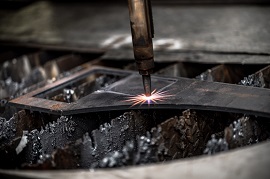

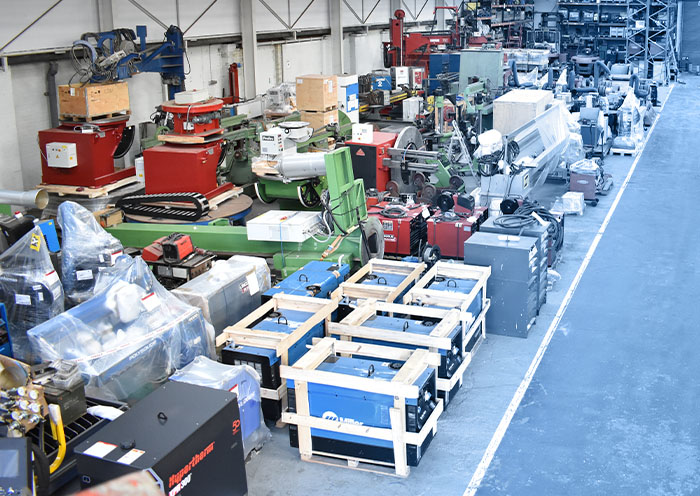

comments
This article provides a comprehensive overview of plasma cutters, from how they work to their applications and safety considerations. It’s a valuable resource for anyone looking to understand this powerful tool.
Thanks for the feedback Charly! Glad you found it useful.
This was extremely helpful to me and my welding business. I’m still learning so many new uses for my plasma cutter, and I really appreciate the content. Keep up the good work!
Thanks Welderhouston, good luck in your business and skills in plasma cutting